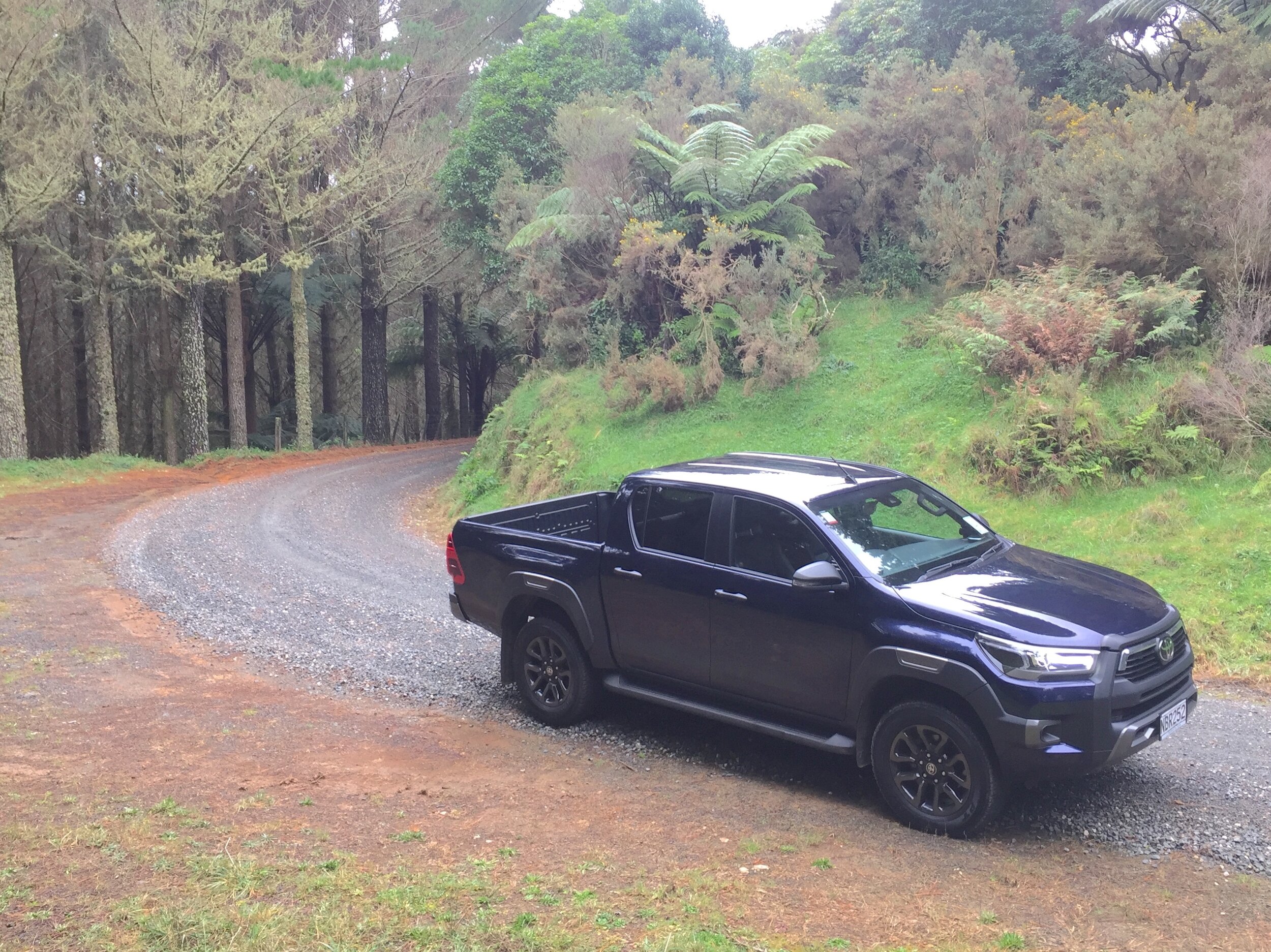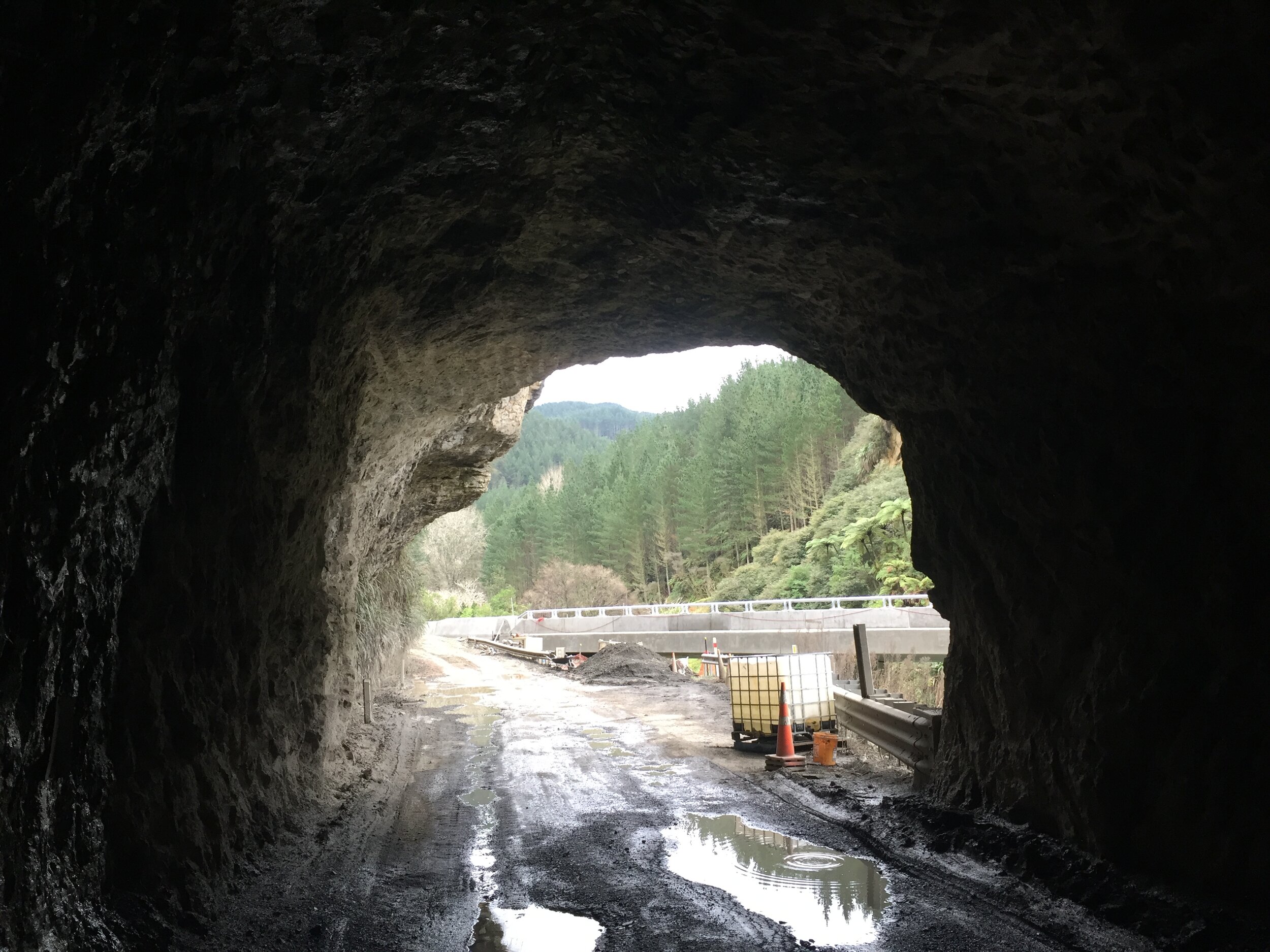Toyota Hilux SR5 Cruiser review: Tunnel vision
/Taking the top dog of Toyota’s one-tonne ute family to visit a highway landmark that’s being transformed into a visitor attraction.
Price: $60,990
Powertrain and economy: 2.8-litre four cylinder turbo diesel, 150kW/500Nm. 4WD, combined economy 7.9L/100km, 207 g/km.
Vital statistics: 5235mm long, 1900mm wide, 1815mm high, 3090mm wheelbase, 18-inch alloy wheels.
We like: Easy drive, high comfort and specification level, eco/power drive mode selector works very well.
We don’t like: Price is getting up even before next year’s feebate hit.
CAN you believe that the tunnel in many of today’s images was, until just days before the photographs were taken, an integral part of New Zealand’s state highway network?
Every day thousands of vehicles squeezed their way through the single-lane Awakino Gorge tunnel 100 kilometres north of New Plymouth, including the big truck and trailer units that make up at least 20 percent of the daily traffic flow along that part of the western North Island’s primary highway route, State Highway 3.
And although in more recent years the skinny little 40 metre-long tunnel had increasingly become a nuisance, particularly to the road transport industry, it was also a landmark attraction for everyone from travelling families to tourists. Surely countless children would have held their breaths and ordered their parents to toot their horns as their vehicles made their way through the gap?
It was of special significant to engineers and historians too, because the Awakino tunnel was one of the very few substantially unmodified tunnels remaining on a state highway route. It had been in use since 1923, and had remained almost untouched since.
But now the tunnel has been removed from SH3, replaced by a $50 million bypass that uses a pair of bridges to cross then re-cross the Awakino River. Once the 2.3km bypass is fully functional, and old tunnel will be out of sight to those aboard the vehicles sweeping past.
The historic old tunnel won’t be forgotten. When the bypass project is complete, it will include a parking area connected to a walkway under one of the bridges which will lead visitors to a picnic area at the tunnel’s entrance. What a great idea for future use of that old piece of transport history – instead of driving through the tunnel, visitors will be able to walk through it.
What will that be like? I used the top version of Toyota’s big-selling Hilux ute, the SR5 Cruiser, to find out. With permission from roading staff at the bypass site, I headed down the now-retired section of tarmac to the tunnel.
Surprisingly, considering that for years the tunnel was a minor hassle for those journeying along SH3, it’s a really interesting place. In fact as I studied the location without having to duck away from cars streaming through, it was hard to believe that up until the middle of this year the tunnel was a fully functioning part of one of the North Island’s most important state highways.
Obviously it is the same as it was when vehicles drove through it mere days earlier, but now it felt different – sort of unkempt and ancient, a visual reminder of older motoring times.
In its disused state, the tunnel’s northern entrance punches into a rock wall covered in a jumble of weeds and native vegetation, while the southern entrance still features a large overhanging escarpment that juts out over the former highway.
The scene is almost exactly the same as it was when the tunnel was opened. For proof, study these then-and-now photographs. One from the 1920s, the other from 2021. The obvious commonality? That hanging rock.
The only improvements made to the tunnel during those years of motoring use, were big improvements to the road surface, and a slight widening in 2011. Even so, it has remained single-lane, and retained much of its original form, scale and appearance.
During the late 19th Century as this very rugged part of King Country was being settled and developed for agricultural use, the original route between the coastal settlement of Awakino and Te Kuiti was over the Taumatamaire Hill, which was notorious as a steep, tough and often dangerous track.
Pressure began to mount for a new route bypassing the hill, and the valley carved out by the Awakino Gorge quickly became the obvious choice. In the early 20th Century the then Public Works Department surveyed a new road, and construction work soon began.
Interestingly, it is not really known if the project included creation of the Awakino tunnel. There is some suggestion it was constructed by the original owner of surrounding farmland so he could gain access to land on either side of a heavily stratified limestone cliff that steeply descends into the Awakino River.
Whether the tunnel was created by the farmer or by road construction gangs, it became an important – and iconic – part of the new route through the Awakino Gorge, a route that was instantly hailed as a vast improvement on the Taumatamaire Hill.
That route over the hill still exists. So, after visiting the old tunnel, I decided to drive the unsealed Taumatamaire Rd, that leaves SH3 south of Mahoenui and runs for 22km before rejoining SH3 just north of Awakino.
After all those years it is still a steep and at times tough drive. It was, however, the perfect motoring environment for the SR5 Cruiser. I turned the dial to slip the vehicle out of rear-wheel drive and into 4WD High, punched the drive mode selector out of Eco and into Power, and took the road on, making good use of the 2.8-litre turbodiesel.
For most part, Taumatamaire Rd is even skinner than the Awakino tunnel, so it was perhaps fortunate I didn’t encounter any traffic coming the other way. The only other humans we spotted over the entire 22km were a group of young men processing a wild pig.
Yep, the place was that isolated – no wonder travellers had breathed a collective sigh of relief when the gorge road had been opened all those years ago.
As for the SR5 Cruiser, once again it demonstrated how good the Hilux ute is, with its uprated engine easily taking on the task, and its improved chassis with more compliant suspension handling the rough sections of the unsealed road.
It is a comfortable and highly-specified vehicle that is an outstanding illustration of how the ute genre is rapidly advancing towards being a fully-fledged passenger vehicle rather than just a commercial model. So, here’s a message to the NZ Motoring Writers’ Guild: Maybe that’s something you should note when considering the list of finalists for this year’s NZ Car of the Year?
The bells and whistles about the Cruiser include 18-inch black alloys on the outside, an 8-inch infotainment screen on the inside with satnav, nine-speaker JBL Premium audio, heated leather seats and leather steering wheel, and Toyota’s excellent Toyota Safety Sense active and passive safety system.
The SR5 Cruiser is the top model in a Hilux range that in August reduces to 16 models following the discontinuation of the manual double-cab SR5 PreRunner and the 4WD manual Extra Cab-Chassis.
At the same time the Cruiser is going to receive a specification update, gaining a few items that quickly frankly should have been there in the first place, considering this ute now retails for $60,990.
From the safety perspective it will get a Panoramic View Monitor, comfort will be increased via installation of dual-zone air conditioning instead of the current single-zone version, and the power folding exterior mirrors will now be heated.
That’s the good news. The bad news however is that the effects of the Covid-19 pandemic mean if you order a Hilux SR5 Cruiser now, it will take up to six months before delivery. A short delay compared with how long it to bypass a skinny old tunnel.





















